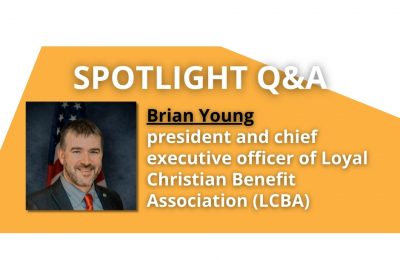Editor’s note: What will happen with the Affordable Care Act (ACA) in 2015? Our member companies continually express their dissatisfaction with the law and have seen their premiums rise and deductibles escalate. It makes planning for the future extremely difficult. The following includes the most current updates on the health-care law.
According to the ACA’s Employer Shared Responsibility provisions (Pay-or-Play Mandate), employers with more than 100 full-time equivalent employees must offer “minimum essential coverage” to full-time employees and their dependents that is both “affordable” and provides “minimum value.” There are two penalty scenarios.
1. If the employer does not offer minimum essential coverage to full-time employees (or offers coverage to fewer than 70 percent) and at least one full-time employee qualifies for a premium tax credit to help pay for exchange-based coverage — their liability is $2,000 times the number of full-time employees, minus up to 80 employees for 2015.
2. If the employer does offer coverage to at least 70 percent of full-time employees but for particular employees the coverage proves unaffordable or fails to provide minimum value — their liability is $3,000 for each full-time employee that qualifies for a premium tax credit to help pay for exchange-based coverage.
Employer Health Coverage Reporting
Similar to W-2 reporting, the law requires employer plan sponsors to file forms with the Internal Revenue Service (IRS) reporting health coverage information on an annual basis. Health coverage data will be collected during 2015 so the required forms can be filed with IRS and furnished to employees early in 2016. The form you use will be dependent upon on whether your health plans are fully insured or self-insured.
Determination of Full-Time Employee Status
Employers must document who is a “full-time” employee under the ACA definition. Most employers are using a “Look-Back” Measurement Method of three to 12 months to determine whether ongoing employees averaged 30 or more hours a week. Employers will then use a corresponding “Stability Period” during which qualifying health coverage will be offered. For 2015 only, employers may use a six-month 2014 look-back period and a 12-month 2015 stability period.
Challenges to the ACA
Although there has been a lot of talk about repealing ObamaCare in its entirety, the new Senate does not have a veto-proof majority of 67 votes. Several bills have been introduced in the House and Senate to “fix” parts of the ACA or at least begin to chip away at it. Here are a few noteworthy ones:
40-Hour Workweek
January 8, 2015: H.R. 30, the Save American Workers Act of 2015 passed the House by a 252-172 and now goes to the Senate. H.R. 30 would amend the Internal Revenue Code of 1986 to repeal the 30-hour threshold for classification as a full-time employee for purposes of the employer mandate in the Patient Protection and Affordable Care Act and replace it with 40 hours. On January 6, 2015: S. 30, the Forty Hours Is Full Time Act of 2015 was introduced by Senator Susan Collins (R-ME) and referred to the Senate Finance Committee.
Medical Device Tax
January 6, 2015: H.R. 160, the Protect Medical Innovation Act of 2015 was introduced by Representative Erik Paulsen (R-MN) with more than 250 co-sponsors, and referred to the House Committee on Ways and Means. The bill would amend the Internal Revenue Code of 1986 to repeal the excise tax on medical devices. The bill will not only lower future tax bills for medical device companies, it retroactively eliminates the tax, which would mean a refund for companies that have already paid it. On January 12, 2015, a companion bill to H.R. 160, S. 149, Medical Device Access and Innovation Protection Act was introduced by Senate Finance Committee Chairman Orrin Hatch (R-Utah) and a bipartisan group of 10 senators.
Individual Medical Plan Premium Reimbursement
December 11, 2014: H.R. 5860, the Small Business Healthcare Relief Act of 2014 was introduced by Rep. Charles Boustany (R-LA) and Mike Thompson (D-CA) to allow small businesses to use pre-tax dollars for assistance to employees purchasing policies in the individual market. Employers with 49 or fewer employees would be able to provide reimbursement or payment of their employee’s individual medical plan premiums on a pre-tax basis.
U.S. Supreme Court Will Rule on Subsidies
The Supreme Court will decide whether subsidies are allowed to be issued in states where the federal government set up health-care exchanges vs. only states that set up their own exchanges. The Court will likely hear arguments in the case the first week of March 2015 and may take until summer 2015 to make a decision. If they rule that those on federal exchanges are not eligible for financial assistance, it could shatter the financial underpinnings of ObamaCare. However, many are of the belief that the Court will not rule against the subsidies.















